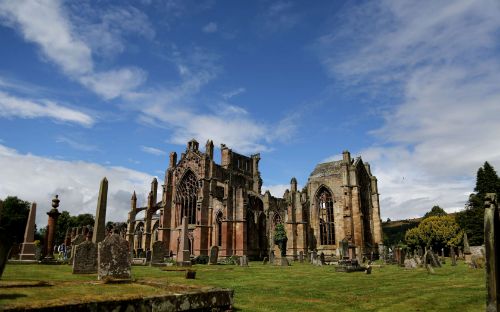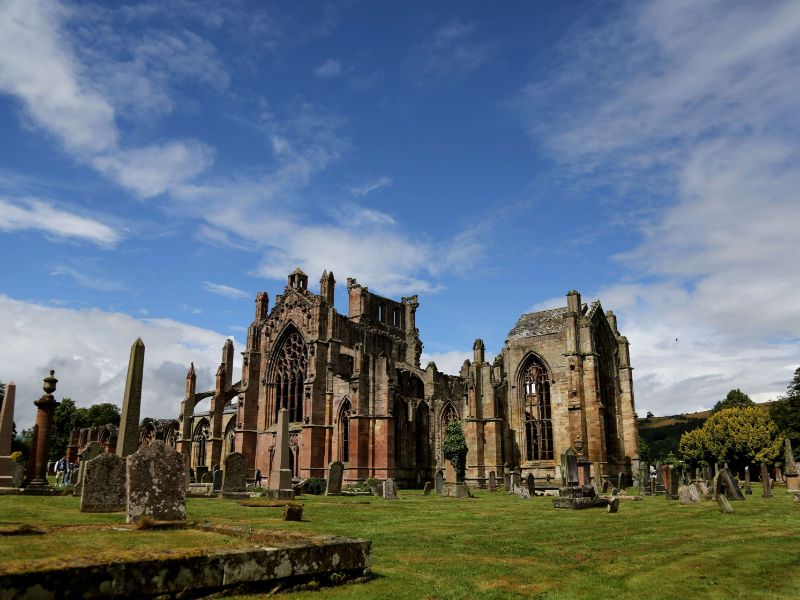Melrose Abbey and its collection
Melrose Abbey, a historical site in Melrose, Scotland, was established in 1136. The Cistercian monks from Clairvaux Abbey in France founded it at the request of King David I, who was the King of Scotland at the time. This historical context adds to the rich tapestry of the Abbey's past, making it a fascinating site for visitors interested in history and architecture.
Architectural Style and Construction of Melrose Abbey
The east wing of Melrose Abbey was completed in 1146, and the rest of the building was added over the next 50 years. The abbey is built in the form of a Saint John's cross, a characteristic of Gothic architectural style. This unique design and the time span of its construction provide a glimpse into the architectural practices of the time, making it an interesting site for those interested in architecture and design.
Melrose Abbey Museum and Ruins
While most of the buildings of Melrose Abbey are now in ruins, a section dating back to 1590 still stands and has been converted into a museum. This museum is open to the public, offering visitors a chance to explore the history and architecture of the Abbey up close. The ruins themselves also provide a unique backdrop for visitors, adding to the overall experience.
History & Anthropology Archaeology Historic house Religion Religious building
#24 History & Anthropology in Scotland #5 Archaeology museums in Scotland #17 Historic houses in Scotland #5 Religion museums in Scotland #3 Religious buildings in Scotland #42 Archaeology museums in United Kingdom #156 Historic houses in United Kingdom #34 Religion museums in United Kingdom #19 Religious buildings in United Kingdom #147 Religious buildings in Europe












